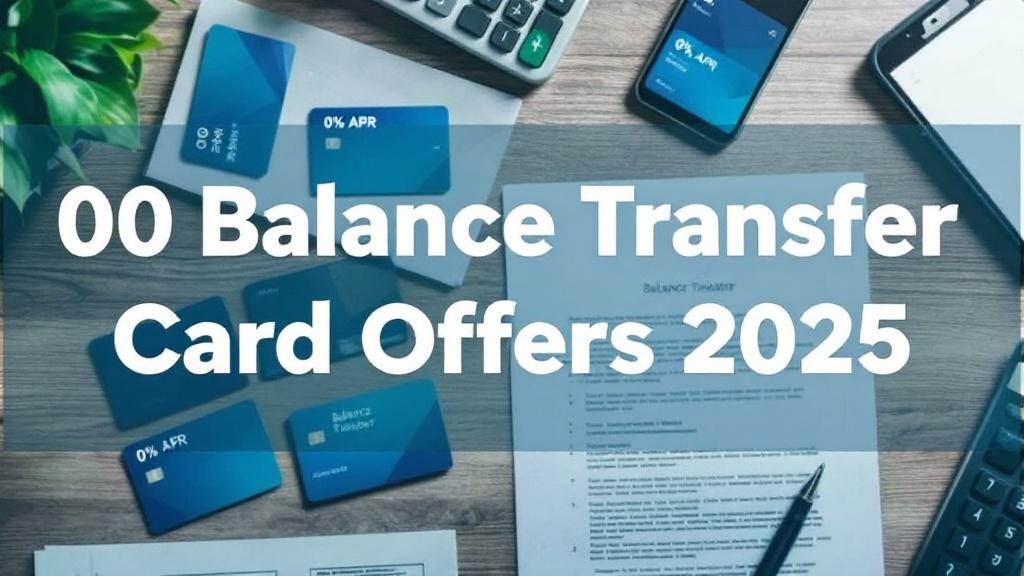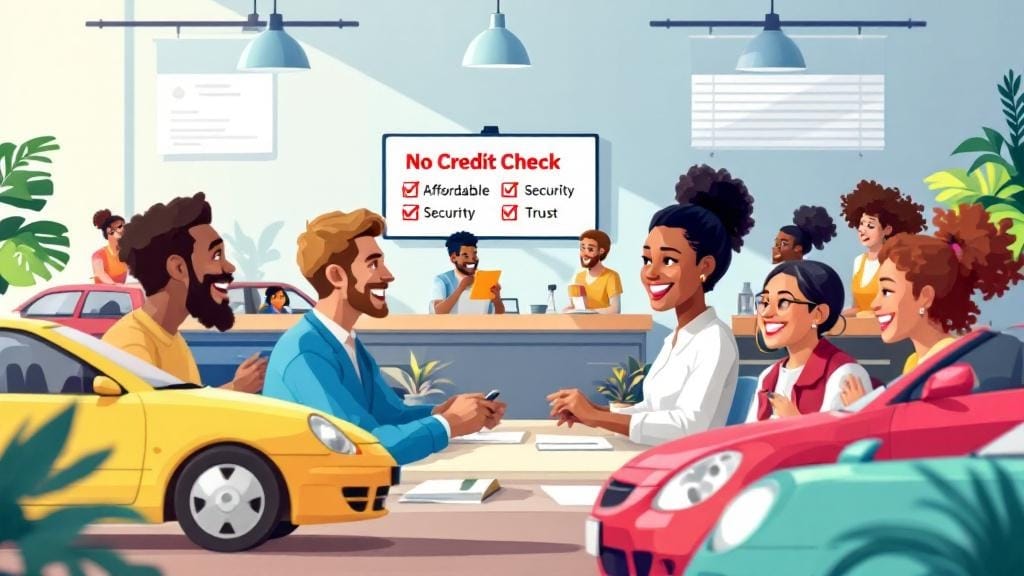If you’re looking to ditch high-interest debt, consolidate payments, or save money on interest, 2025 is your year to take advantage of 0 balance transfer card offers. With inflation still impacting household budgets and credit card APRs reaching new highs, more Americans are turning to balance transfer offers as a smart financial strategy.
In this guide, we’ll explore the top credit card balance transfer offers in 2025, how to apply for them, and how to use them wisely to get ahead financially. Whether you’re new to credit or experienced in managing multiple cards, understanding your 0% APR credit card offers could help you save hundreds—or even thousands—in interest.
🔍 What Is a 0 Balance Transfer Card?
A 0 balance transfer card is a type of credit card that allows you to transfer existing debt from one or more cards to a new card with a 0% introductory APR. This promotional period typically lasts anywhere from 6 to 21 months, depending on the offer.
During this time, you won’t be charged interest on your transferred balance. That means every payment you make goes toward reducing the principal, helping you get out of debt faster.
📈 Why 0% APR Balance Transfer Cards Are Popular in 2025
As of mid-2025, the average credit card APR is hovering near 22%. For consumers carrying balances month to month, this can add up fast. That’s where 0% intro APR balance transfer offers come in.
Here’s why they’re trending:
Rising interest rates are prompting consumers to seek relief.
Many credit card companies are offering no interest balance transfer cards to attract new customers.
Financial wellness is a growing trend, and managing credit card debt wisely is part of it.
💡 Pro Tip: A balance transfer can also improve your credit score by lowering your credit utilization ratio—just be sure not to rack up new debt!
🏆 Best 0 Balance Transfer Card Offers for 2025
Here are some top 0% APR balance transfer cards making waves this year:
1. Citi® Diamond Preferred® Card
0% intro APR on balance transfers for 21 months
Balance transfer fee: 5% (min $5)
No annual fee
2. Wells Fargo Reflect® Card
0% intro APR up to 21 months with on-time payments
No rewards, but excellent for long-term transfers
Low fee balance transfer card
3. Chase Slate Edge®
0% intro APR for 18 months
Potential to lower APR after 6 months of on-time payments
No annual fee, simple structure
4. Discover it® Balance Transfer
0% intro APR for 18 months
Earn cashback on new purchases
Balance transfer credit card with rewards
💰 Real-life example: Monica transferred $6,000 from two high-interest cards to a 0% APR card. Over 18 months, she saved more than $1,200 in interest and paid off the full balance before the promo expired.
💡 How to Apply for a 0 Balance Transfer Card
If you’re wondering how to apply for a 0 balance transfer card, follow these simple steps:
Step 1: Check Your Credit Score
Most 0% APR balance transfer offers require good to excellent credit (typically 670+). Check your score before applying.
Step 2: Compare Offers
Look for cards with:
A 0% intro APR that lasts 15+ months
A low or no balance transfer fee
No annual fee (if possible)
Rewards or perks for spending (optional)
Step 3: Apply Online
Use the issuer’s website. You’ll need:
SSN and income info
Monthly housing payment
Current debts
Step 4: Transfer the Balance
Once approved, request a balance transfer via your new card’s dashboard or phone support. It usually takes 5–10 business days.
📋 What to Look for in a Balance Transfer Offer
When evaluating credit cards with 0 balance transfer fee or 0% APR credit card offers, keep the following in mind:
✅ Key Features to Watch:
Intro APR period length (longer = better)
Balance transfer fee (ranges from 0% to 5%)
Regular APR after the promo ends
Eligibility for rewards
Fees and charges (annual fees, late payment fees, etc.)
🔍 Example long-tail keyword use: Be sure to review all credit card balance transfer terms before finalizing your decision.
⚠️ Common Pitfalls to Avoid
While these offers can be a powerful financial strategy for balance transfer, misuse can be costly.
Avoid These Mistakes:
Missing a payment (can void the 0% offer)
Not paying off the balance before the promo ends
Racking up new purchases on the new card
Transferring more than your limit allows
🧠 Tip: Always calculate if the balance transfer fee is worth the interest saved. Sometimes a card with no balance transfer fee and a slightly shorter intro period can still be the better deal.
🔄 When to Consider a Balance Transfer
Wondering if this move is right for you? Consider it if:
You’re paying high interest on current credit cards
You have a plan to pay off the balance within the intro period
You’re not planning to open multiple new accounts
You want to consolidate your debts and simplify payments
✅ It’s also a great tool for credit card consolidation—especially if your goal is to improve your credit utilization and payment history.
🎁 Can You Earn Rewards with a Balance Transfer Card?
Yes—but choose wisely. While many balance transfer cards don’t offer rewards on transferred balances, some offer cashback or points on new purchases.
Look for:
Credit card rewards points on categories you frequently spend in
Cashback match offers (e.g., Discover it®)
Signup bonuses (but only if you can hit spending limits responsibly)
Just remember: Don’t chase rewards if it means going deeper into debt.
🔄 Long-Term vs. Short-Term Balance Transfers
Some people prefer long-term balance transfer options (18–21 months), while others may opt for shorter promos with lower fees.
Pros of Long-Term Offers:
More time to repay without interest
Less pressure each month
Flexibility during emergencies
Cons:
May have higher transfer fees
Typically no rewards or bonuses
📊 Managing Your Credit After a Balance Transfer
A balance transfer is a great first step—but it’s not the finish line.
Best Practices:
Make on-time payments every month
Pay more than the minimum
Avoid new debt on any card
Monitor your credit score regularly
Using this method responsibly can improve your creditworthiness—and open the door to better rates in the future.
🙋♂️ Frequently Asked Questions (FAQs)
1. What is a 0 balance transfer card and how does it work?
A 0 balance transfer card allows you to transfer debt from existing credit cards to a new one with 0% interest for a limited time. It helps you save on interest and pay down debt faster.
2. Can I get a card with no balance transfer fee?
Yes, credit cards with 0 balance transfer fee do exist, though they are rarer. Check for offers from institutions like Navy Federal Credit Union or Amex from time to time.
3. Is a balance transfer bad for my credit score?
Initially, your score might dip due to a hard inquiry or new account. But over time, if used wisely, a balance transfer can help your credit by lowering your utilization ratio and improving payment history.
4. What are the typical credit card balance transfer terms?
Intro APR periods typically range from 6 to 21 months. Fees vary between 0% and 5%. Always read the terms carefully to understand your promotional window and what happens afterward.
5. Can I transfer balances from multiple cards?
Yes, you can transfer balances to a credit card from more than one card—if your new card’s limit allows it. Always double-check that the total doesn’t exceed your credit limit.
6. What’s the best financial strategy for balance transfer in 2025?
The best approach is to:
Choose a card with a long 0% intro APR
Transfer your highest-interest balances first
Avoid making purchases on the new card
Set up auto-pay to stay on track
7. Do balance transfers earn credit card rewards points?
No, you don’t earn points for balance transfers. But you can earn rewards on new purchases—just make sure your debt transfer credit card also offers a reward structure.
✅ Final Thoughts: Should You Get a 0 Balance Transfer Card in 2025?
If you’re dealing with high-interest credit card debt, a 0 balance transfer card could be your golden ticket to financial freedom in 2025. Just make sure to read the fine print, stay disciplined with your payments, and choose the card that best fits your needs.
Remember: The goal is not just to shift debt—but to eliminate it.








Comments (0)